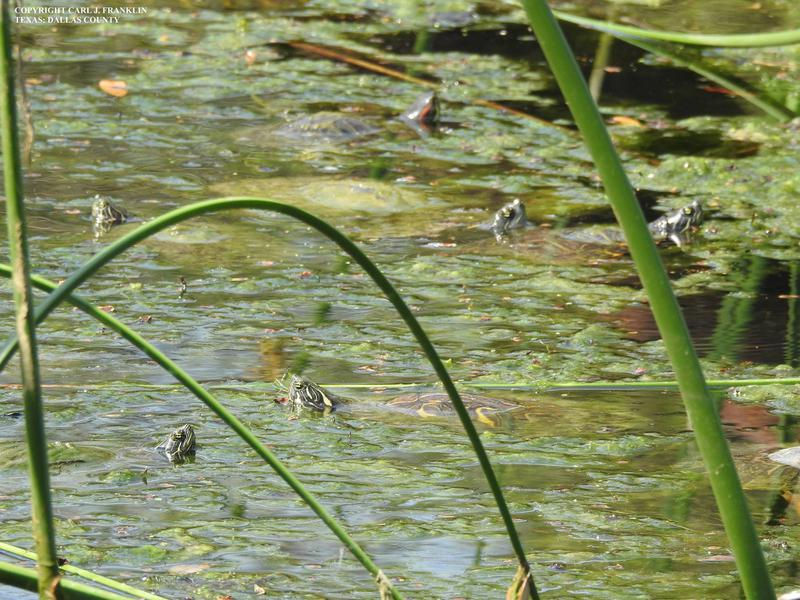
EASTERN RIVER COOTER (Pseudemys concinna), (LE CONTE, 1830)
IDENTIFICATION: This is the largest of our basking turtles. Adult females grow to 12-16.5 inches (30-42 cm) in carapace length while males achieve a carapace length of 8-12 inches (20-30 cm). The carapace is long, oval and widest at the midsection. The posterior marginal scutes are often serrated. The creamy yellow plastron is almost as long and wide as the carapace. The bridge is wide and a notch is present on the posterior portion. The carapace is dark olive green to brown with yellow lines creating a reticulating pattern. Dark spots surrounded by whorls are also present on the underside of the marginals and are divided by the suture line separating each marginal scute.
The head is dark green with thin yellow lines extending from the tip of the nose along the top of the head and the interior of the nostrils is yellow to yellowish green. The coloration of the lines can vary depending upon the age of the specimen from bright to faded yellow. Two large stripes are present on top of the head and a thin yellow border is present just behind the eye. Two yellowish stripes extend from the eye, one running downward diagonally from underneath the eye across the corner of the mouth downward alongside the neck. The other stripe reaches from behind the eye and extends along the neck. In some specimens these stripes may be broken.
The limbs are also dark green to black or reddish-orange among mature male specimens with yellow lines extending down the front of them. A row of serrated scales is also present along the outer edge of the forelimbs. A suffusion of pinkish-orange is often visible on the outer edges of the limbs and amid the webbing between the toes. The fore limbs have two prominent yellowish-orange stripes bordered by black extending from the point of insertion of the second and fourth claws up the front of the limb.
The males' enlarged claws range in color from yellowish orange to olive greenish yellow depending upon age and locality. Usually the coloration of the claws is similar to the coloration of the stripe on the fore-limbs. Among sexually mature males, the second and fourth claws are equal in length, while the third (middle) is the longest and approximately the length of the first and the second or fourth. These claws are used for the titillation of females during courtship and often become worn down with age. When males advance in age they display reticulate melanism, the yellow lines extending from the fore claws up the front limb are replaced with an overall reddish-orange. In time these lines fade and blend into a background coloration of reddish-orange with a suffusion of black spots.
BEHAVIOR AND ECOLOGY: Eastern river cooters inhabit still or slow-moving bodies of water such as slow-moving portions of rivers, oxbows, ponds and lakes with soft bottoms and abundant aquatic vegetation. This species is gregarious and can be found soaking up sunshine while alongside other basking turtles. Hatchlings and juveniles will consume various prey items including snails, insects, worms, crustaceans, small amphibians and small fish. As they grow their diet shifts towards aquatic vegetation including both algae and vascular plants.

Green represents county records based upon released pets found in the wild.



























